-
 Bitcoin
Bitcoin $117700
-0.03% -
 Ethereum
Ethereum $3805
0.49% -
 XRP
XRP $3.098
-1.00% -
 Tether USDt
Tether USDt $1.000
0.03% -
 BNB
BNB $792.8
-1.72% -
 Solana
Solana $177.9
-1.95% -
 USDC
USDC $1.000
0.02% -
 Dogecoin
Dogecoin $0.2202
-1.55% -
 TRON
TRON $0.3278
-2.92% -
 Cardano
Cardano $0.7641
-2.43% -
 Hyperliquid
Hyperliquid $42.21
-2.68% -
 Sui
Sui $3.758
-1.58% -
 Stellar
Stellar $0.4080
-3.21% -
 Chainlink
Chainlink $17.75
-0.33% -
 Bitcoin Cash
Bitcoin Cash $591.8
4.96% -
 Hedera
Hedera $0.2561
-3.09% -
 Avalanche
Avalanche $23.34
-4.24% -
 Litecoin
Litecoin $110.7
1.96% -
 UNUS SED LEO
UNUS SED LEO $8.956
-0.01% -
 Toncoin
Toncoin $3.410
0.79% -
 Ethena USDe
Ethena USDe $1.001
0.03% -
 Shiba Inu
Shiba Inu $0.00001288
-1.82% -
 Uniswap
Uniswap $10.07
-2.06% -
 Polkadot
Polkadot $3.807
-2.27% -
 Monero
Monero $308.2
-2.15% -
 Dai
Dai $1.000
0.03% -
 Bitget Token
Bitget Token $4.521
-0.30% -
 Pepe
Pepe $0.00001134
-1.52% -
 Cronos
Cronos $0.1457
0.65% -
 Aave
Aave $274.9
-2.47%
How to find new liquid staking projects
"Explore new liquid staking projects early via blockchain explorers, DeFi analytics, and community engagement to maximize yields and participation in emerging protocols."
Jul 30, 2025 at 01:14 pm
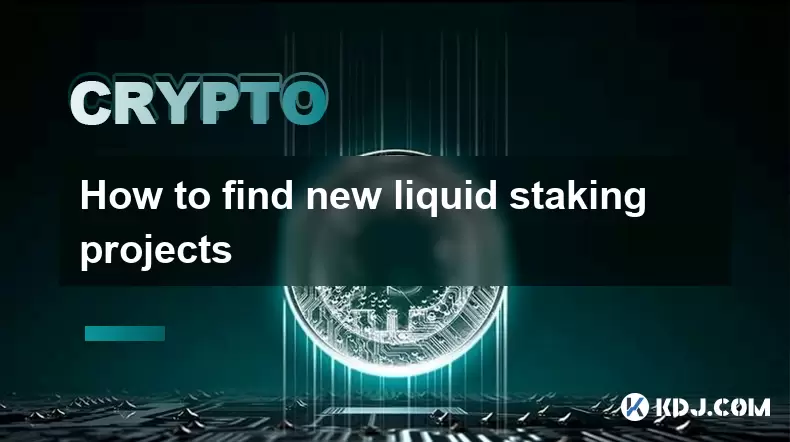
Understanding Liquid Staking and Its Importance
Liquid staking is a mechanism that allows users to stake their cryptocurrency assets while still maintaining liquidity. When you stake your tokens in a traditional staking setup, they become locked, and you lose the ability to trade or use them elsewhere. Liquid staking protocols solve this issue by issuing staked tokens (like stETH or rETH) that represent the staked assets and can be used across decentralized finance (DeFi) platforms.
This innovation has led to a surge in interest in new liquid staking projects, as users seek opportunities to earn staking rewards without sacrificing flexibility. Identifying these emerging projects early can offer significant advantages, including higher yields and early participation in potentially successful protocols.
Monitoring New Projects on Blockchain Explorers
One of the most reliable ways to find new liquid staking projects is by using blockchain explorers such as Etherscan for Ethereum-based projects or Solscan for Solana-based ones. These tools allow you to explore newly deployed smart contracts and track recent token creations.
- Visit the "Contracts" or "Tokens" section on your preferred blockchain explorer.
- Look for recently created contracts with high transaction volumes.
- Examine the contract code for functions related to staking and the issuance of derivative tokens.
Caution is essential, as many of these new contracts may be scams or unverified protocols. Always cross-reference findings with community discussions and project documentation before interacting.
Tracking Emerging Protocols on DeFi Analytics Platforms
DeFi analytics platforms like Dune Analytics, DeFi Llama, and DefiRate are excellent resources for identifying new liquid staking projects. These platforms aggregate data from across the blockchain ecosystem and often highlight new protocols gaining traction.
- Visit DeFi Llama and filter projects by the "Staking" category.
- Explore Dune dashboards that track staking derivatives and liquid staking TVL (Total Value Locked).
- Use search filters to narrow down by chain, token type, or recent launch dates.
These platforms often provide real-time data, allowing users to see how much liquidity is flowing into a project and how user activity evolves over time.
Engaging with Communities on Social Media and Forums
The crypto community is highly active on platforms like Twitter (X), Reddit, Discord, and Telegram. Many new liquid staking projects announce themselves first on these platforms to build early interest and community support.
- Follow DeFi-focused accounts on Twitter and set up alerts for keywords like "liquid staking" or "new staking protocol."
- Join Discord servers of major DeFi protocols and watch for announcements or third-party integrations.
- Participate in Reddit threads under communities like r/ethfinance or r/DeFi, where users often share and discuss emerging projects.
Community feedback is crucial in assessing the legitimacy and potential of a new project. Always pay attention to developer transparency, audit status, and governance models.
Reviewing Audits and Technical Documentation
Once you identify a new liquid staking project, the next step is to assess its technical soundness. Reputable projects usually publish whitepapers, technical documentation, and audit reports from known security firms like CertiK, PeckShield, or OpenZeppelin.
- Check the project’s GitHub repository for active development and code quality.
- Review audit reports to understand potential vulnerabilities or risks.
- Ensure that the project has a clear tokenomics model and staking mechanism explained in detail.
Smart contract audits are especially important because they can reveal whether the project is secure and whether the team is committed to transparency and user safety.
Participating in Airdrops and Testnets
Many new liquid staking projects launch testnets or incentivized test phases to attract early users. These testnets often reward participants with tokens or future airdrops.
- Follow project announcements on their official channels.
- Participate in testnet campaigns by running nodes or interacting with the protocol.
- Keep your testnet tokens in the same wallet that you use for the mainnet, as these may be airdropped upon mainnet launch.
Airdrop hunters often use tools like DappRadar or AirdropBob to track these opportunities. Engaging early can offer both financial rewards and early access to new staking opportunities.
Frequently Asked Questions
Q: What are the risks of participating in new liquid staking projects?
A: Risks include smart contract vulnerabilities, lack of audits, potential rug pulls, and volatility in staking rewards. Always perform due diligence before staking funds.
Q: Can I unstake my tokens from a liquid staking protocol at any time?
A: Most liquid staking protocols allow instant unstaking, but there may be slippage or fees depending on the protocol's bonding curve or liquidity pool dynamics.
Q: Are liquid staking tokens considered yield-bearing assets?
A: Yes, liquid staking tokens (like stETH or rETH) typically accrue staking rewards over time and can be used in DeFi protocols to earn additional yield.
Q: How do I verify if a new liquid staking project is trustworthy?
A: Look for public audits, transparent team information, active GitHub repositories, and community engagement. Avoid projects with anonymous teams or unclear tokenomics.
Disclaimer:info@kdj.com
The information provided is not trading advice. kdj.com does not assume any responsibility for any investments made based on the information provided in this article. Cryptocurrencies are highly volatile and it is highly recommended that you invest with caution after thorough research!
If you believe that the content used on this website infringes your copyright, please contact us immediately (info@kdj.com) and we will delete it promptly.
- LYNO Token Presale: AI Arbitrage Revolution in DeFi
- 2025-07-31 05:11:11
- Pepecoin Successors: Can These Cryptocurrencies Make You a Millionaire?
- 2025-07-31 05:50:12
- AML Bitcoin Fraud: Cracking Down on Crypto Crime in the Big Apple and Beyond
- 2025-07-31 04:33:53
- Cardano (ADA) in 2025: Navigating Crypto's Future
- 2025-07-31 03:52:07
- Solana Meme Coin Price Prediction: Will the Frog Outleap the Dog?
- 2025-07-31 03:52:07
- Bitcoin's Bullish Outlook: CryptoQuant's Insights on Futures Market Cooling
- 2025-07-31 03:59:10
Related knowledge
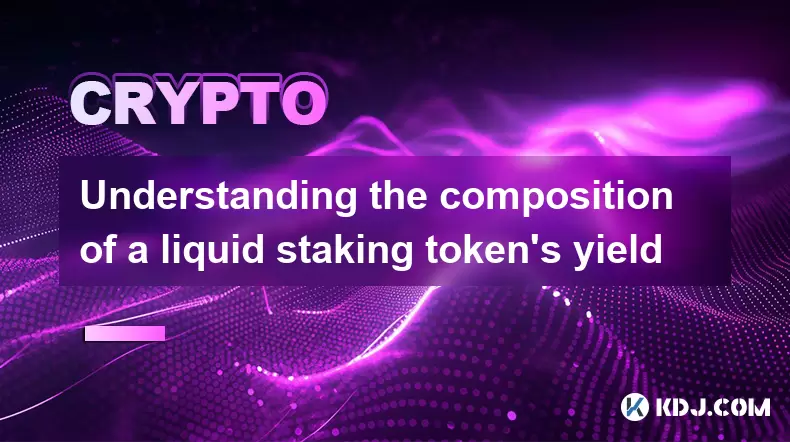
Understanding the composition of a liquid staking token's yield
Jul 20,2025 at 09:07am
What Is a Liquid Staking Token?A liquid staking token is a representative asset issued to users who stake their native cryptocurrency on a proof-of-st...
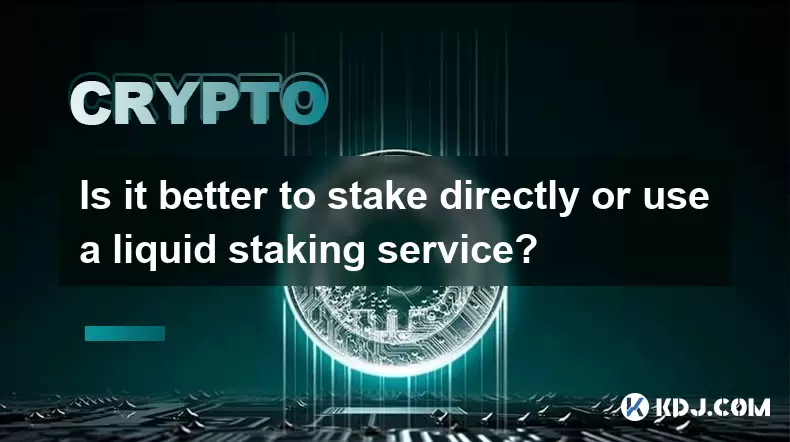
Is it better to stake directly or use a liquid staking service?
Jul 22,2025 at 08:21pm
Understanding the Basics of StakingStaking in the context of blockchain and cryptocurrency refers to the process of locking up digital assets to suppo...
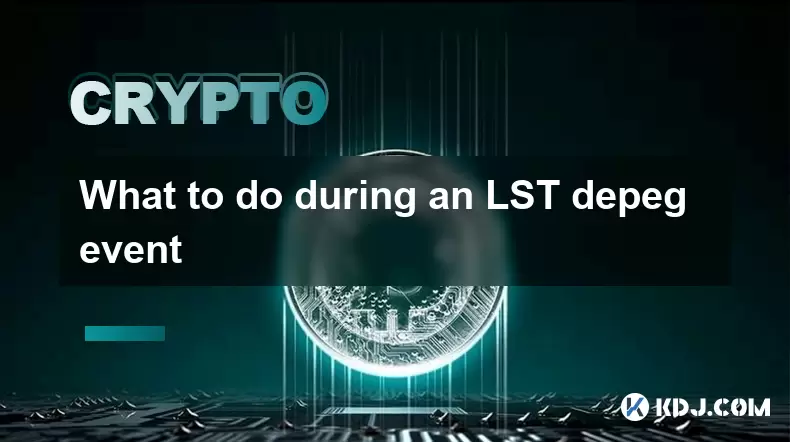
What to do during an LST depeg event
Jul 20,2025 at 04:57pm
Understanding LST Depeg EventsAn LST (Liquid Staking Token) depeg event occurs when the token, which is typically pegged to the value of the underlyin...

How to find new liquid staking projects
Jul 30,2025 at 01:14pm
Understanding Liquid Staking and Its ImportanceLiquid staking is a mechanism that allows users to stake their cryptocurrency assets while still mainta...
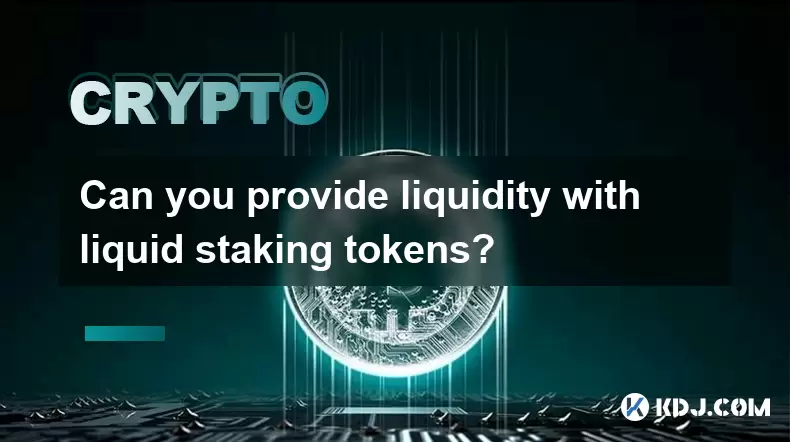
Can you provide liquidity with liquid staking tokens?
Jul 22,2025 at 10:22am
Understanding Liquid Staking TokensLiquid staking tokens (LSTs) are derivative tokens that represent staked assets on a proof-of-stake (PoS) blockchai...
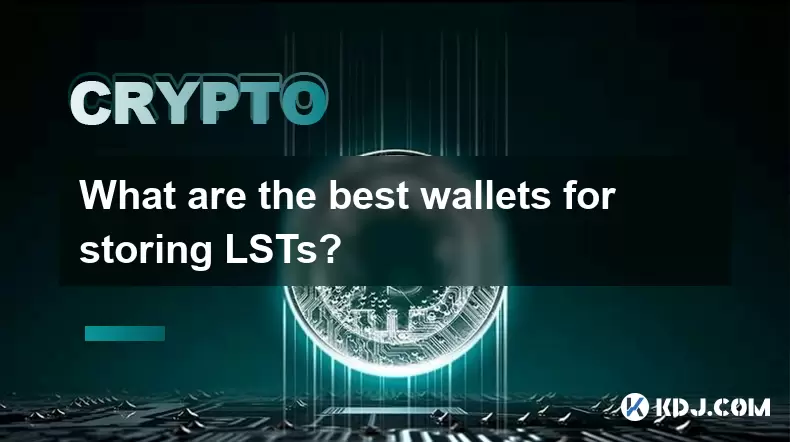
What are the best wallets for storing LSTs?
Jul 21,2025 at 03:14pm
Understanding LSTs and the Need for Secure StorageLSTs, or Liquid Staking Tokens, are derivative tokens representing staked assets on a blockchain. Wh...

Understanding the composition of a liquid staking token's yield
Jul 20,2025 at 09:07am
What Is a Liquid Staking Token?A liquid staking token is a representative asset issued to users who stake their native cryptocurrency on a proof-of-st...

Is it better to stake directly or use a liquid staking service?
Jul 22,2025 at 08:21pm
Understanding the Basics of StakingStaking in the context of blockchain and cryptocurrency refers to the process of locking up digital assets to suppo...

What to do during an LST depeg event
Jul 20,2025 at 04:57pm
Understanding LST Depeg EventsAn LST (Liquid Staking Token) depeg event occurs when the token, which is typically pegged to the value of the underlyin...

How to find new liquid staking projects
Jul 30,2025 at 01:14pm
Understanding Liquid Staking and Its ImportanceLiquid staking is a mechanism that allows users to stake their cryptocurrency assets while still mainta...

Can you provide liquidity with liquid staking tokens?
Jul 22,2025 at 10:22am
Understanding Liquid Staking TokensLiquid staking tokens (LSTs) are derivative tokens that represent staked assets on a proof-of-stake (PoS) blockchai...

What are the best wallets for storing LSTs?
Jul 21,2025 at 03:14pm
Understanding LSTs and the Need for Secure StorageLSTs, or Liquid Staking Tokens, are derivative tokens representing staked assets on a blockchain. Wh...
See all articles

























































































